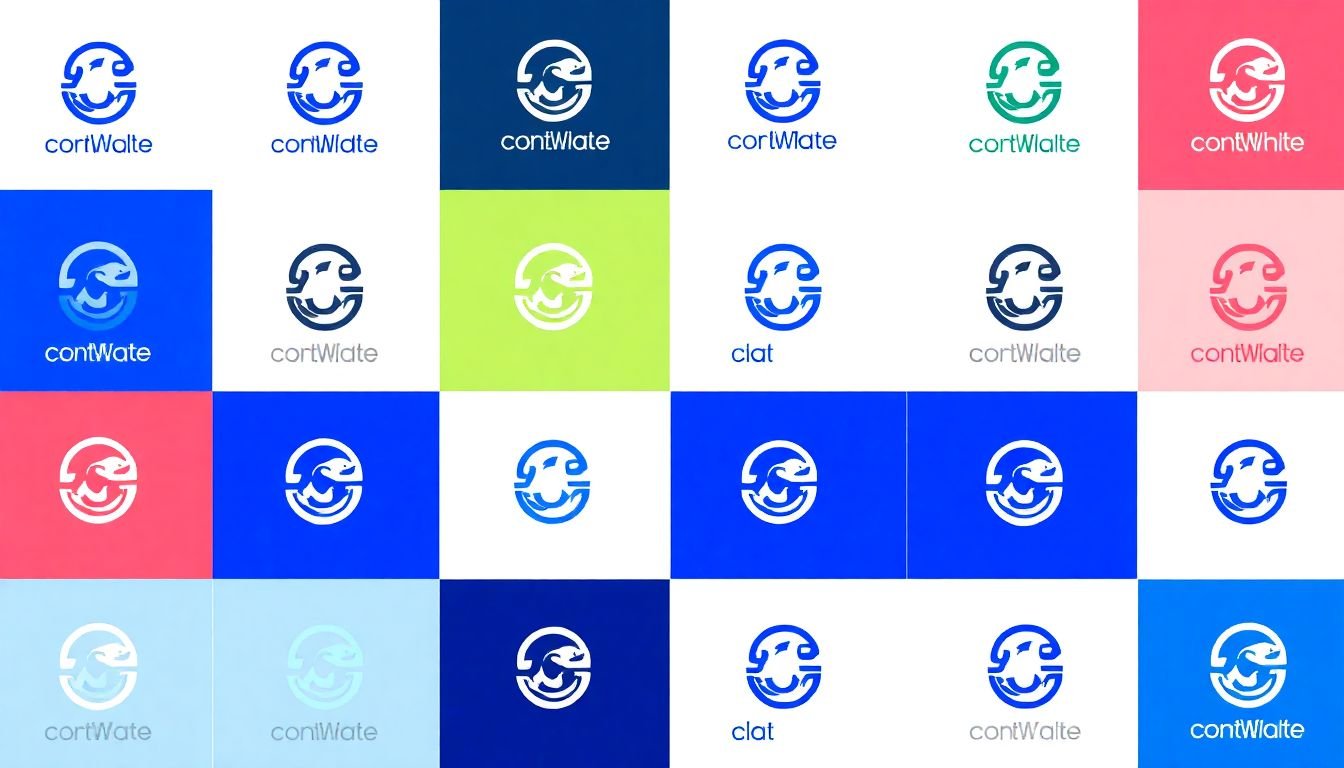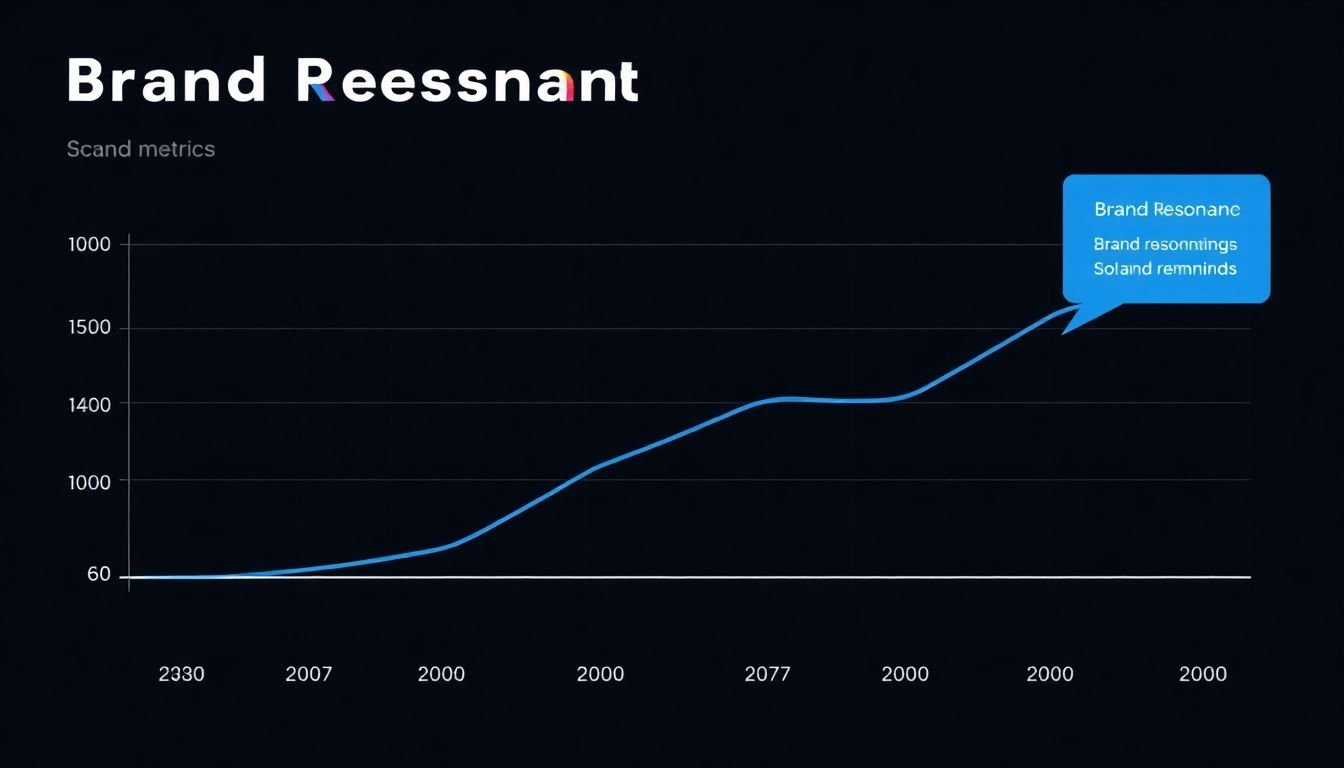
Table of Contents
In the vast ocean of businesses, each one is a unique ship, and its corporate identity is the lighthouse that guides it through the stormy seas of competition. But how many of these lighthouses are merely flickering candles, lost in the fog, while others shine brightly, guiding their audiences with unwavering clarity? This article, ‘Beyond the Logo: How to Build a Corporate Identity That Resonates with Your Audience’, is your navigation chart, promising to steer you towards creating a corporate identity that doesn’t just exist, but lives, breathes, and resonates with your audience. Did you know that a strong brand can increase the value of a company by up to 21%? (Source: Forbes) Yet, according to a study by Rebrand, 77% of B2C companies and 83% of B2B companies believe their brand is strong, while only 13% of their customers agree. This disconnect highlights a pressing need for businesses to understand their audience better and build a corporate identity that truly resonates. So, let’s agree on one thing: a corporate identity is more than just a logo or a color scheme. It’s the soul of your business, the personality that makes you unique, the promise you make to your audience. It’s the reason why people choose you over your competitors. But how do you create this soul, this personality, this promise? How do you ensure it’s not just a flickering candle, but a beacon that guides your audience towards you? In this article, we promise to delve deep into the art and science of building a corporate identity that resonates. We’ll explore the psychology behind brand resonance, the importance of understanding your audience, and the role of consistency in building a strong corporate identity. We’ll also provide practical tips and real-life examples to illustrate these concepts, making this article a comprehensive guide for businesses of all sizes. By the end of this article, you’ll be able to:
- Understand the concept of corporate identity and its role in business success.
- Identify the key elements of a resonant corporate identity.
- Learn how to conduct audience research and use the insights to inform your corporate identity.
- Discover the importance of consistency and authenticity in building a strong corporate identity.
- Gain practical tips on how to implement and maintain a resonant corporate identity. So, are you ready to transform your corporate identity from a flickering candle to a shining beacon? Let’s embark on this journey together, and by the end of this article, you’ll have the tools you need to create a corporate identity that truly resonates with your audience.
Unveiling the Secrets of Brand Resonance and Audience Engagement
In the dynamic realm of marketing, one concept stands as a beacon of success: brand resonance. This elusive yet powerful phenomenon is the holy grail of businesses, the secret sauce that transforms mere customers into loyal, enthusiastic advocates. But what exactly is brand resonance, and how can we, as marketers, unlock its potential to engage audiences and drive growth? At its core, brand resonance is the emotional connection that consumers form with a brand, a bond that transcends rational thought and taps into the depths of human psychology. It’s the feeling of belonging that Apple fans experience when they queue for the latest iPhone, or the sense of adventure that Jeep enthusiasts share when they hit the open road. To unveil the secrets of brand resonance, we must first understand our audience. We must delve into their minds, their hearts, and their behaviors to identify what drives them, what they value, and what they aspire to. This is where audience engagement comes into play. Engaging audiences is not merely about pushing content out into the world; it’s about drawing them in, fostering a dialogue, and creating experiences that resonate with their unique identities. It’s about understanding that they are not just consumers, but individuals with stories, dreams, and passions. By leveraging data, insights, and creativity, we can craft brand narratives that speak to these individuals, that inspire them, and that make them feel seen, heard, and understood. This is the art of brand resonance, the key to unlocking audience engagement, and the path to building lasting, meaningful relationships with our customers. So, let’s embark on this journey together, shall we? Let’s peel back the layers, explore the depths, and unveil the secrets of brand resonance and audience engagement.

The Logo: The Tip of the Iceberg
The logo, a brand’s visual ambassador, is often the first point of contact between a company and its audience. It’s the tip of the iceberg, a mere glimpse into the vast, intricate world of corporate identity. While it’s crucial and undeniably impactful, focusing solely on the logo is akin to judging a book by its cover. A resonant brand is a symphony, and the logo is but the first note.
The logo sets the stage, but the brand’s true essence lies in the intricate choreography that follows. This includes the brand’s mission, values, voice, and messaging. It’s the consistent, cohesive narrative that weaves through every touchpoint, from packaging to customer service.
Consider the brand as a tree. The logo is the fruit, visible and enticing, but it’s the roots and trunk that provide the nourishment and structure. The roots represent the brand’s foundation
- its purpose, values, and culture. The trunk is the brand’s voice and messaging, consistently communicating its essence. The branches are the various touchpoints
- advertising, social media, packaging, customer service
- all working together to create a cohesive, resonant brand.
To create a resonant brand, one must look beyond the logo and delve into these aspects. Here are some steps:
-
Define the Brand’s Purpose and Values:
- Understand what the brand stands for, its reason for existence, and its core values.
Develop a Consistent Voice and Messaging:
- Establish a tone that resonates with the target audience and ensures it’s consistently communicated across all touchpoints.
Design a Comprehensive Visual Identity:
- While the logo is a part of this, it also includes color schemes, typography, imagery, and more. These elements should work together to create a cohesive, recognizable brand identity.
Consider All Touchpoints:
Every interaction a customer has with the brand should reinforce its identity. This includes advertising, social media, packaging, customer service, and even the brand’s physical spaces.
In conclusion, while the logo is the face of a brand, it’s just the beginning. To create a resonant brand, one must look beyond the logo and craft a comprehensive, cohesive identity that touches every aspect of the customer experience.
-

Defining Your Brand’s DNA
Defining your brand’s DNA is an exhilarating journey that delves into the heart of your business, unearthing its unique essence and setting it apart in the vast marketplace. This process, much like a scientific exploration, involves identifying and articulating three fundamental components: your brand’s core values, mission, and personality. Let’s embark on this adventure together.
Core Values: The Building Blocks of Your Brand’s Character Core values are the fundamental beliefs of your brand, the guiding principles that shape your culture and behavior. They are the unyielding standards that your brand upholds, even when no one is watching. To identify your brand’s core values, consider the following steps:
- Gather your team and brainstorm the qualities you admire most in your brand.
- Reflect on the moments when your brand has felt most proud and aligned with its purpose.
- Identify the behaviors and actions that your brand is known for, or aspires to be known for.
Mission: Your Brand’s Compelling Purpose Your brand’s mission is its reason for existence, the driving force behind its actions. It’s the promise you make to your customers, employees, and stakeholders about the difference you aim to make in the world. Crafting a compelling mission involves:
- Defining the problem your brand solves, or the need it fulfills.
- Articulating the unique approach your brand takes to addressing this problem or need.
- Describing the impact or outcome your brand aspires to create.
Personality: The Human Face of Your Brand Your brand’s personality is the way it communicates and interacts with the world. It’s the emotional connection your brand forges with its audience, making it relatable, memorable, and engaging. To define your brand’s personality, consider:
- Identifying the human traits and characteristics that your brand embodies.
- Determining the tone of voice and visual style that best represents your brand.
- Crafting a brand story that illustrates your brand’s personality and resonates with your audience.
Once you’ve identified and articulated these three components, you’ll have a clear and compelling definition of your brand’s DNA. This will serve as your brand’s compass, guiding its decisions, actions, and communications. It will also provide a powerful tool for engaging your audience, attracting like-minded customers, and building a strong, enduring brand.

The Power of Storytelling
In the vast landscape of marketing, one tool stands out for its ability to captivate, engage, and inspire: the power of storytelling. A well-crafted brand story is not merely a collection of facts or a sales pitch; it’s a living, breathing entity that can evoke emotions, create connections, and foster brand resonance with the audience. Let’s delve into the magic of storytelling and explore how it can transform a brand into a relatable, memorable entity.
At its core, a compelling brand story is a narrative that weaves together the brand’s origins, values, mission, and vision. It’s the tale of how the brand came to be, the problems it solves, and the dreams it helps its customers achieve. But it’s not just about the brand; it’s also about the people it serves. A great brand story is one that resonates with its audience on an emotional level, making them feel seen, understood, and valued.
To craft a compelling brand story, consider the following steps:
-
Understand Your Audience:
- Before you start weaving your tale, you need to know who you’re telling it to. Understand their needs, desires, fears, and aspirations. This will help you create a story that speaks directly to their hearts.
Identify Your Brand’s Origin and Purpose:
- Every brand has a beginning. Was it born out of a passion for a particular cause? Or perhaps it was created to solve a specific problem? Your origin story should be authentic, inspiring, and reflective of your brand’s purpose.
Highlight Your Brand’s Values:
- Values are the moral compass of your brand. They guide your decisions, shape your culture, and define your identity. When crafting your story, ensure your values are woven into the narrative, making them visible and relatable to your audience.
Show, Don’t Tell:
- Instead of listing your brand’s attributes, paint a picture with your words. Use vivid descriptions, metaphors, and anecdotes to bring your story to life and make it memorable.
Make It About Your Audience:
Ultimately, your brand story should be about how your brand can improve your audience’s lives. It should make them the hero of the story, with your brand as their trusted guide.
When executed well, a compelling brand story can create a profound connection with the audience. It can evoke emotions, stir the imagination, and foster a sense of belonging. It can turn mere customers into brand advocates, transforming them into storytellers in their own right, spreading your brand’s tale far and wide. In essence, the power of storytelling is not just about telling a good story; it’s about creating a community, a movement, a shared dream. And that, perhaps, is the most powerful tool in a brand’s arsenal.

Consistency: The Cornerstone of Identity
Consistency, in the realm of corporate identity, is not merely an option; it’s the cornerstone upon which a robust and recognizable brand is built. Imagine a world where your favorite coffee shop served you a different brew each time you visited, or your bank’s logo changed with every login. Confusing, right? This is the power of consistency
- it creates familiarity, builds trust, and fosters recognition.
In the grand tapestry of corporate identity, consistency weaves its thread through every touchpoint. Let’s break this down into manageable steps.
- Firstly, visual elements
- your logo, color scheme, and typography. These should be consistent across all platforms, from your website to your business cards, and even your email signature. It’s like having a uniform that everyone recognizes as yours.
- Next, messaging. Your brand voice should be consistent whether it’s in your advertising campaigns, social media posts, or customer service interactions. It’s like having a unique accent that people associate with you.
- Lastly, customer experience. Consistency here means delivering the same level of service and quality across all touchpoints. It’s like being a reliable friend who always shows up on time.
Inconsistency, on the other hand, can lead to confusion, mistrust, and even loss of business. It’s like trying to navigate a city with no street signs
- you might get there eventually, but it’s going to be a lot harder and more frustrating. So, the next time you’re tempted to change your brand’s font or tone, remember that consistency is key. It’s the silent guardian that protects your corporate identity, ensuring that your brand is always recognizable, always trustworthy, and always you.

The Voice of Your Brand
In the vast, bustling marketplace of ideas and products, a company’s voice is its most powerful tool for standing out and connecting with its audience. Developing a unique brand voice is akin to giving your company a personality, a soul that resonates with your target audience. It’s the intangible essence that makes your brand not just recognizable, but relatable, human.
Imagine your brand voice as a conversation starter, a warm invitation to your audience to step into your world. It’s the tone of your social media posts, the language of your website, the rhythm of your advertising campaigns. It’s the ‘hello’ that makes your audience pause, look up, and say, ‘Hello, I’ve been looking for you.’
Crafting a unique brand voice is a journey that involves several steps. First, you need to understand your audience. Who are they? What do they value? What makes them tick? Once you’ve got a clear picture, you can start to shape your voice to reflect their interests, their aspirations, their sense of humor.
Next, consider your brand’s mission and values. Your voice should be a natural expression of these. If your brand is about innovation, perhaps your voice should be bold, forward-thinking. If it’s about comfort and reliability, maybe your voice should be warm, reassuring.
Finally, consistency is key. Your voice should be recognizable across all platforms, all touchpoints. It should be the thread that weaves your brand story together, making it cohesive, memorable.
In essence, developing a unique brand voice is about creating a connection, a bond between your company and your audience. It’s about making your brand more than just a product or a service; it’s about making it a friend, a confidant, a partner. And that, in turn, enhances brand resonance, making your audience more likely to engage with, trust, and advocate for your brand.

Designing the Brand Experience
Designing the Brand Experience
In the dynamic landscape of today’s market, creating a cohesive brand experience that aligns with a brand’s identity and resonates with its audience is not just an advantage, but a necessity. A brand’s identity is its personality, its promise to the world, and it’s crucial that this identity is consistently reflected in every interaction a customer has with the brand. This is where the art of designing the brand experience comes into play.
Imagine a brand as a storyteller, and every touchpoint as a chapter in that story. Each chapter should seamlessly flow into the next, maintaining the narrative’s integrity and keeping the reader engaged. The brand’s identity is the story’s core, and the experience is the way this story is told. If the story is inconsistent or confusing, the audience will lose interest and move on to another storyteller.
To design a cohesive brand experience, there are several steps to consider:
- Understand Your Brand Identity: Before you can design an experience, you must first understand what your brand stands for. This includes its mission, vision, values, and personality.
- Identify Touchpoints: Every interaction a customer has with your brand is a touchpoint. This could be anything from a website visit, to a social media post, to a conversation with a customer service representative. Make a list of all these touchpoints.
- Map the Current Experience: Once you’ve identified your touchpoints, map out the current customer journey. This will help you understand where the experience is cohesive and where it’s falling short.
- Align Touchpoints with Brand Identity: Using your understanding of your brand identity, align each touchpoint to ensure it’s reflecting the brand’s personality. This could mean anything from the language used on your website to the design of your packaging.
- Test and Refine: Once you’ve designed your ideal brand experience, test it. Gather feedback from your audience and refine your experience based on this feedback.
By following these steps, you can create a brand experience that is not just cohesive, but also engaging, memorable, and true to your brand’s identity.

The Role of Culture in Corporate Identity
In the dynamic landscape of business, a company’s culture and corporate identity are not merely distinct entities, but intricately intertwined forces that reinforce each other, creating a robust internal brand that echoes externally. Let’s delve into this symbiotic relationship.
Corporate identity, the personality of a company as perceived by the outside world, is often the first point of contact between an organization and its stakeholders. It’s the face that a company presents to the world, shaped by its mission, vision, and values. However, this external perception is heavily influenced by the internal culture. A company’s culture, the shared values, beliefs, and behaviors that define how things are done, is the heartbeat of its operations. It’s the invisible hand that guides decision-making, innovation, and employee engagement.
The relationship between culture and corporate identity is a two-way street. On one hand, a strong corporate identity can shape and reinforce a company’s culture. A well-defined identity provides a clear roadmap for employees, guiding their behavior and actions. It fosters a sense of belonging and shared purpose, which can boost employee engagement and productivity. For instance, a company known for its innovation and customer-centric approach will likely foster a culture that values creativity, risk-taking, and customer focus.
On the other hand, a robust company culture can significantly enhance a corporate identity. A positive, vibrant culture can attract and retain top talent, reducing employee turnover and associated costs. It can also enhance customer satisfaction and loyalty, as employees who feel valued and engaged are more likely to provide excellent service. Moreover, a strong culture can differentiate a company from its competitors, making it more recognizable and appealing to both customers and investors.
To harness this symbiotic relationship, companies can take several steps. Firstly,
- align corporate identity with company culture during the onboarding process. This ensures that new employees understand and embrace the company’s values and behaviors from the outset.
- Encourage open communication and feedback. This fosters a culture of trust and engagement, reinforcing the corporate identity.
- Lead by example. Senior leadership plays a pivotal role in shaping and reinforcing both culture and corporate identity.
In conclusion, the role of culture in corporate identity is not just significant, but integral. They are two sides of the same coin, each reinforcing the other to create a powerful internal brand that translates into external resonance. By nurturing this relationship, companies can build a strong, sustainable brand that stands the test of time.

Measuring Brand Resonance
Measuring brand resonance, a critical aspect of brand management, involves assessing the emotional connection and loyalty consumers have with a brand. Key performance indicators (KPIs) and metrics serve as invaluable tools in this process, guiding brand strategy and development. Let’s delve into the key metrics and explore how they can steer brand growth.
Brand Awareness and Recall:
These are fundamental metrics that gauge the extent to which consumers recognize and remember a brand. They are typically measured through surveys and can be further segmented into aided and unaided recall. High brand awareness and recall indicate a strong brand presence, guiding marketers to focus on maintaining or enhancing this visibility.
Brand Sentiment:
This metric assesses the emotional connection consumers have with a brand. It’s often measured through social media listening, customer reviews, and surveys. Positive brand sentiment signals a strong emotional bond, encouraging brands to nurture this connection and explore opportunities for deeper engagement.
Net Promoter Score (NPS):
NPS measures the likelihood of customers to recommend a brand to others. It’s a powerful indicator of brand loyalty and advocacy. A high NPS score suggests a strong brand resonance, prompting brands to focus on retaining and rewarding these loyal customers.
Customer Lifetime Value (CLV):
CLV estimates the total revenue a business can reasonably expect from a single customer account throughout the business relationship. It’s a key metric for understanding the long-term value of a brand’s customer base. A high CLV indicates a strong brand resonance, guiding brands to invest in customer retention and loyalty programs.
Brand Equity:
This metric evaluates the total value of a brand, including its financial and non-financial assets. It’s a comprehensive measure of brand resonance, reflecting the brand’s strength, power, and influence. Brands with high brand equity can command premium pricing, enter new markets, and enjoy greater customer loyalty.
By tracking these KPIs and metrics, brands can gain a holistic understanding of their brand resonance. This insights can guide strategic decisions, helping brands to build stronger, more meaningful connections with their customers. Regularly reviewing and acting on these metrics is key to driving brand growth and success.

Evolving with Your Audience
In the dynamic landscape of today’s business world, maintaining a static corporate identity can be akin to trying to hold back the tide. Your audience, much like the ocean, is in a state of constant flux, evolving with the tides of time, technology, and societal shifts. Staying connected with them and adapting your corporate identity to mirror their changing needs, preferences, and behaviors is not just an option, but a necessity. This process, often referred to as ‘evolving with your audience,’ is a journey that requires vigilance, flexibility, and a deep understanding of your audience.
Firstly, it’s crucial to foster a culture of active listening. This isn’t just about hearing what your audience is saying, but truly understanding their evolving needs. Regularly conduct surveys, engage in social listening, and encourage open communication channels. This will provide you with a wealth of insights into their changing preferences and behaviors.
Secondly, use these insights to inform your corporate identity. This could mean anything from refining your brand messaging to overhauling your product offerings. For instance, a company that once thrived on physical retail might need to pivot towards e-commerce to cater to the shift in consumer behavior towards online shopping. Or, a brand known for its serious tone might need to adopt a more playful, conversational style to resonate with a younger audience.
Lastly, remember that evolution is a continuous process. What works today might not tomorrow. Therefore, it’s essential to maintain a feedback loop, continually gathering and acting on audience insights. This agility will not only help you stay relevant but also build a stronger, more resilient brand that can weather the storms of change.